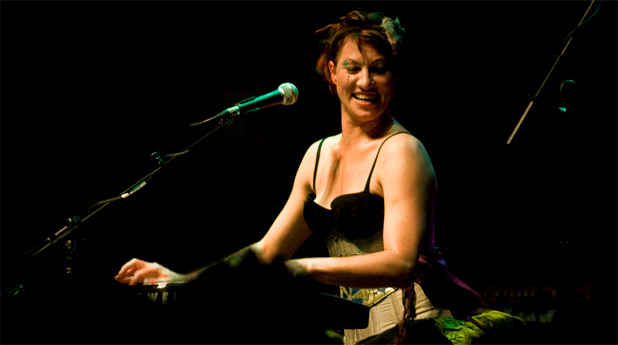In 1982, the high concept sci-fi film Tron used then cutting-edge computer generated imagery to take us inside a cybernetic world. Back then the whole CGI process was still in its infancy, but the film was ahead of its time. With the recent advances in both CGI and 3D technology, the time seems right to revisit that artificial world. So here is the belated and unnecessary sequel, Tron: Legacy.
In 1982, the high concept sci-fi film Tron used then cutting-edge computer generated imagery to take us inside a cybernetic world. Back then the whole CGI process was still in its infancy, but the film was ahead of its time. With the recent advances in both CGI and 3D technology, the time seems right to revisit that artificial world. So here is the belated and unnecessary sequel, Tron: Legacy.
The film is set some twenty years after the original. Computer games designer Kevin Flynn (Jeff Bridges) is still missing, having become trapped inside his arcade game. His son Sam (Garrett Hedlund, from Four Brothers) receives a strange message from his father’s business partner (Bruce Boxleitner, reprising his role from the original) and goes to investigate. Arriving at his father’s former workshop he opens a portal and is drawn into the world of Tron.
But since we last saw this cyber world much has changed. Tron is run by the despotic Clu (Jeff Bridges), the near perfect computer program that ultimately trapped Flynn. Clu has staged a coup, and Flynn is an exile living outside the main grid and helpless to change things. With the help of Qorra (Olivia Wilde), a warrior, Sam organises a desperate rescue bid and tries to help his father escape this world and return to the real world.
First time feature director Joseph Kosinski has worked on the visual effects for video games like Halo 3 and Gears Of War, and is certainly a dab hand at creating stunning visuals and exciting alternative worlds. Here he pays homage to the ground breaking achievements and the virtual world created by original director Steven Lisberger, but he also further expands and enriches his vision and takes the concept further. Visually Tron: Legacy is quite striking, with plenty of flashy visuals, neon lit jumpsuits and futuristic motorcycles. The world of Tron has also been shot in 3D, which is at times quite stunning.
It is definitely strange to see Bridges come face to face with a younger-looking version of himself. Using the same process that reverse-aged Brad Pitt in The Curious Case Of Benjamin Button, Bridges’ face, circa the early ‘80s, has been digitally superimposed onto the digitally created character of Clu. It looks suspiciously artificial, which suits the character, as Clu is meant to be untrustworthy and sinister.
However, these gimmicks do not adequately compensate for a rather dull film experience. The plot is dull and the dialogue rather banal. Bridges himself spends much of the time spouting zen philosophy and existential nonsense. A techno-driven score from Daft Punk is on the same wavelength as Kosinski’s surreal vision, and adds to this unsettling digitally created futuristic world.
Like Avatar before it, Tron: Legacy is the latest Hollywood film to show off the newest advances in technology and gimmickry, and it will change the face of filmmaking. But it seems that, as the superb CGI technology advances, the movies have lost that whole “Gee whiz, how did they do that?” factor that made going to the movies as a wide-eyed kid such an immense pleasure.







